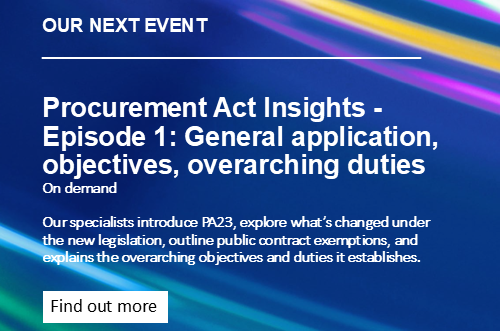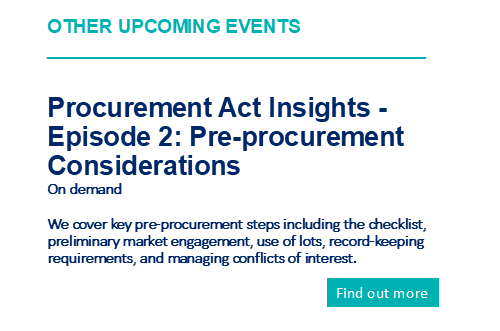- Details
Clarification of Section 73 powers: Implications for local planning authorities
Rebecca Stewart covers the recent Court of Appeal guidance on the scope of planning condition variations permissible under section 73 of the Town and Country Planning Act 1990.
On 10 December 2024, the Court of Appeal delivered a significant judgment in Test Valley Borough Council v Chala Fiske [2024] EWCA Civ 1541, providing essential guidance on the scope of planning condition variations permissible under section 73 of the Town and Country Planning Act 1990. This decision has substantial implications for local planning authorities (“LPAs”).
The procedure in section 73 is used where a developer wishes to proceed with a development without complying with conditions subject to which a previous planning permission was granted. The effect of section 73 is in essence to enable conditions to be varied or removed.
Background
The case involved a planning permission granted by the appellant in 2017 for a solar farm in East Wellow, Hampshire, which included a 33kV substation (the “2017 Permission”).
The operative part of the 2017 Permission was considered to comprise two parts – a description of the development which included a ‘substation’ and a list of approved plans including one showing the 33kV substation. Details of the substation were subsequently approved by the LPA in accordance with condition 15 of the 2017 Permission.
In 2022, planning permission was granted under section 73 (the “Section 73 Permission”). The description of the development authorised by the Section 73 Permission included reference to a ‘substation’ but the list of approved drawings, which also formed part of the operative part of the planning permission, did not include the approved plan of the 33kV substation or reference to a layout plan. These were previously approved in the operative part of the 2017 Permission.
Furthermore, the Section 73 Permission did not replicate condition 15 of the 2017 Permission (which required details to be approved in relation to a 33kV substation) and condition 2 of the Section 73 Permission required the delivery of the development in accordance with approved plans which did not include reference to the 33vK substation.
Key Findings
The Court of Appeal, upholding the High Court’s decision, affirmed that section 73 does not permit changes to planning conditions where the changes are inconsistent with the operative part of the previous planning permission.
The ruling in Fiske builds on the principle established in Finney v Welsh Ministers [2019] EWCA Civ 1868 that the operative part of a planning permission granted under section 73 cannot alter the operative part of the previous planning permission.
Interestingly, in Fiske, the Court also suggested that on the facts of the case there was a breach of the Finney principle because the Section 73 Permission had included in its operative part reference to a plan that conflicted with a plan referred to in the operative part of the 2017 Permission. However, the Court did not hear arguments on this point and so made no binding decision.
In drawing its conclusion in Fiske, the Court addressed the question of whether inconsistency with a previous permission needs to be “fundamental” or “substantial” to render a section 73 permission unlawful.
The Court concluded that there was no such requirement; the inconsistency need only be greater than de minimis. Each case would turn on its own facts, though the Court indicated that the scope for reliance on the de minimis principle would be very limited.
The Court went on to clarify that where both the operative parts and the conditions of a section 73 permission are consistent with the operative part of the extant permission then section 73 does not prevent conditions making “fundamental” alterations to the consented scheme.
Implications for local planning authorities
This judgment requires LPAs to take a vigilant approach when determining section 73 applications.
Before granting a section 73 application, LPAs should:
- Carefully evaluate whether the proposed conditions align with the original permission’s operative part;
- Pay particular attention to the specific wording of the previous permission, particularly as the operative part of that permission may include references to plans (thereby reducing the scope of potential section 73 applications); and
- Continue to be mindful of conflicts between the operative part of an existing permission and the operative wording of an application under section 73 (in accordance with Finney).
LPAs should not grant planning permission for a section 73 application that they consider would conflict with the previous permission’s operative part. Taking a careful approach to handling such applications will serve to mitigate the risk of legal challenge.
Rebecca Stewart is an Associate at Sharpe Pritchard LLP.
Sharpe Pritchard’s planning team is well-placed to advise in relation to Section 73 applications and LPA decision making: please do contact us if you require assistance.
For further insight and resources on local government legal issues from Sharpe Pritchard, please visit the SharpeEdge page by clicking on the banner below.
This article is for general awareness only and does not constitute legal or professional advice. The law may have changed since this page was first published. If you would like further advice and assistance in relation to any issue raised in this article, please contact us by telephone or email
|
Click here to view our archived articles or search below.
|
|
ABOUT SHARPE PRITCHARD
We are a national firm of public law specialists, serving local authorities, other public sector organisations and registered social landlords, as well as commercial clients and the third sector. Our team advises on a wide range of public law matters, spanning electoral law, procurement, construction, infrastructure, data protection and information law, planning and dispute resolution, to name a few key specialisms. All public sector organisations have a route to instruct us through the various frameworks we are appointed to. To find out more about our services, please click here.
|
|
OUR RECENT ARTICLES
December 10, 2025
Sharpe Pritchard appointed to £60m London Boroughs’ Legal Alliance frameworkSharpe Pritchard, one of the UK’s leading public law firms, has been re-appointed to the London Boroughs’ Legal Alliance (LBLA) Solicitors Panel.
November 20, 2025
Strengthening the standards and conduct framework for local authorities in EnglandJames Berry offers his insight into how the proposed changes to standards and conduct rules will affect local authorities.
November 04, 2025
Procuring and operating open frameworks under the Procurement Act 2023Chantelle Pink offers advice to authorities on open frameworks and how to procure them.
October 31, 2025
Building Solar – 5 Top Tips for Solar Farm Construction ContractsSolar farm construction contracts are in focus following fascinating insights into the continuing global uptake and expansion of renewables, and particularly solar, within the 2025 mid-year report of Ember, a global energy think tank.
|
|
OUR KEY LOCAL GOVERNMENT CONTACTS
|
||
|
Partner 020 7406 4600 Find out more |
||
|
Partner 020 7406 4600 Find out more |
||
|
Rachel Murray-Smith Partner 020 7406 4600 Find out more |







 Catherine Newman
Catherine Newman
